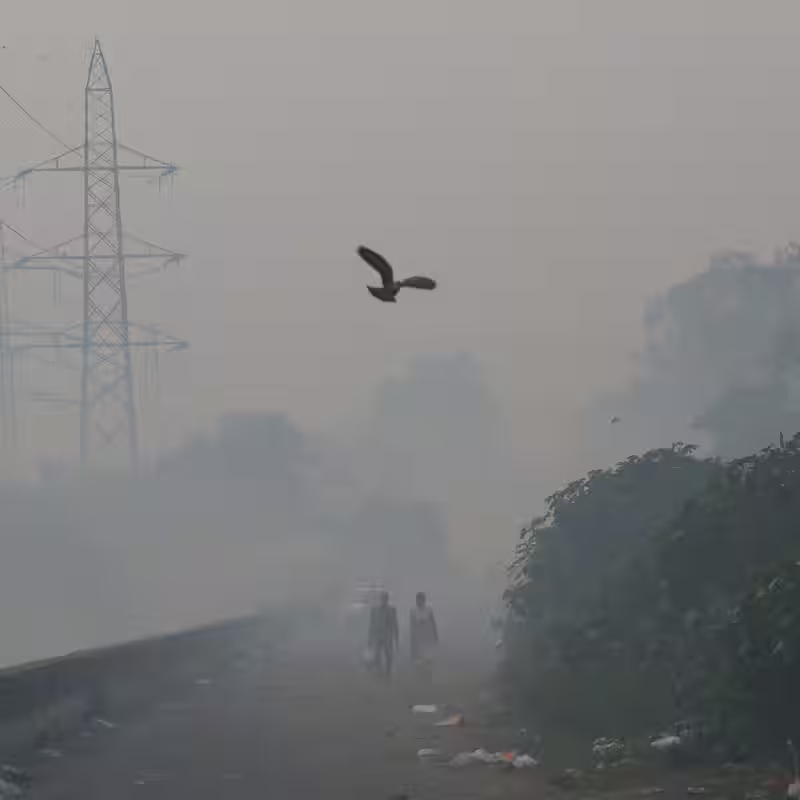As the festive lights of Diwali illuminate New Delhi, a more sinister glow settles over the city: a thick, toxic haze that signals the annual descent into a public health emergency. Despite being home to some of the world’s most polluted air, meaningful solutions remain elusive, with experts pointing to a deeply entrenched political stalemate as the primary roadblock to clean air .
Table of Contents
- The Diwali Danger
- What’s Really Choking Delhi?
- The Political Smokescreen
- What Citizens Can Do
- Sources
The Diwali Danger
Diwali, the festival of lights, has become synonymous with a festival of smog in India’s capital. The tradition of lighting firecrackers, a key part of the celebration for many, acts as the final, devastating spark that ignites an already volatile air quality situation. Even with a ban on firecrackers announced for the 2024-2025 season, enforcement remains a significant challenge, and the air quality still plummets to ‘very poor’ levels during the festivities [[5], [6]].
What’s Really Choking Delhi?
While firecrackers are the most visible culprit during Diwali, they are just one piece of a much larger and more complex pollution puzzle. A decadal analysis of the crisis reveals a cocktail of year-round offenders:
| Source of Pollution | Contribution | Seasonal Peak |
|---|---|---|
| Vehicular Emissions | High (Constant) | Year-round |
| Industrial Activities | High (Constant) | Year-round |
| Construction Dust | Moderate-High | Year-round |
| Stubble Burning | ~38% of Diwali spike | Oct-Nov |
| Firecrackers | Acute, short-term spike | Diwali |
Crucially, Delhi starts each season with dangerously high baseline levels of PM2.5 and PM10. This means that even a small additional source of pollution, like a Diwali celebration, can push the city’s air quality index (AQI) into the ‘severe’ or ‘hazardous’ category .
The Political Smokescreen
The most significant barrier to solving Delhi’s air pollution crisis isn’t technological or scientific—it’s political. The issue spans multiple states and jurisdictions, creating a classic ‘blame game’ scenario. The national capital territory of Delhi often points fingers at the neighboring states of Punjab and Haryana for the massive clouds of smoke from post-harvest stubble burning. In turn, those states argue that Delhi’s own local sources—its millions of vehicles and countless industries—are the primary problem .
This political gridlock has prevented the implementation of a cohesive, long-term regional action plan. Short-term, reactive measures like emergency car rationing or temporary factory closures are announced when the air becomes unbreathable, but these are merely band-aids on a gaping wound. A former Delhi environment minister’s declaration of new measures in early 2025 highlights the ongoing struggle, but without cross-state cooperation and political will, their impact is limited .
What Citizens Can Do
While the onus is firmly on policymakers, citizens are not powerless. Here are a few actions that can make a collective difference:
- Choose a Green Diwali: Skip the firecrackers entirely. Opt for eco-friendly decorations and celebrate with light, not smoke.
- Reduce Personal Vehicle Use: Use public transport, carpool, or cycle whenever possible.
- Stay Informed: Monitor the AQI through official apps and limit outdoor activities on high-pollution days.
- Demand Accountability: Use your voice and vote to pressure elected officials for concrete, long-term solutions.




